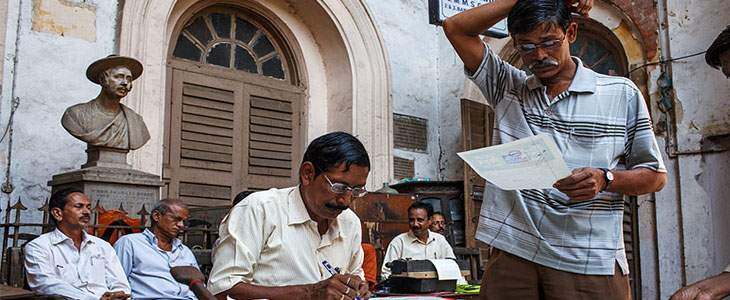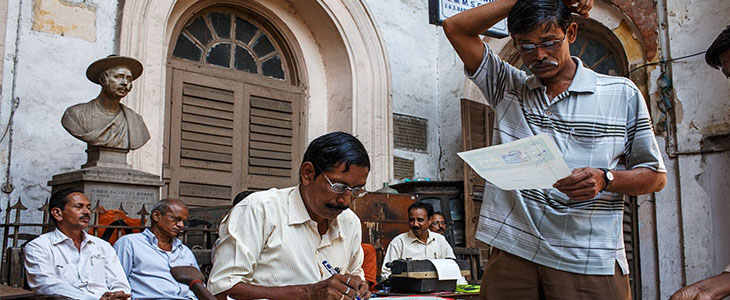Governments around the world are increasingly elected on a platform of greater citizen participation. The antagonist for progress in effective decentralisation is poorly conceived policies where design don’t match objectives. Roy Bahl makes a neat attempt to explain the vital guidelines for designing the implementation strategy for fiscal decentralisation. In this part of our blog series, we shall look into these rules of implementation:
Rule #1: Fiscal Decentralisation as a comprehensive system
Decentralisation can only take place when it can build itself into a comprehensive system. A strong locally elected council, locally appointed officers, local taxing powers and autonomy to spend along with hard budget constraints are a must. Additionally, these local governments (LG) must have borrowing power and intergovernmental fiscal transfer with limited expenditure mandates from the central authorities.
Why is this important?
A well formulated structure with downward accountability to the local population will ensure that efficiency gains that are at the heart of fiscal decentralisation is not lost. Optimal efficiency occurs when service delivery to citizens are locally directed and are not delivered as directed by the Center.
Real World Examples: Karnataka made its intergovernmental transfer to LGs transparent by replacing ad hoc grants with a formula based transfer. However, the state controls what the local bodies do by tying the fund transfers to expenditure mandates it defines. This negates the potential gains from efficiency that can be achieved through decentralisation.
Rule #2: Finance follows function
The second basic rule discusses the process of how functions determine the finances of LGs. Here the emphasis is in the order. Expenditure assignment should always be assigned first and only then the revenues be assigned to LGs.
Why is this important?
Expenditure needs for LGs needs to be addressed before tackling the question of revenue assignments. For example public utility like bus charges can be financed through user charges. But to do so the LG would need to know if transportation comes under their functional domain.
Real World Examples: The Indian Constitution allows for 29 subjects that could be devolved by the states to the LGs. Number of functions allocated to LGs in India varies dramatically from state to state and as a logical corollary so do the revenue streams.
Rule #3: Strong Central ability to monitor and evaluate decentralisation
The role of the Central agency is not nullified but enhanced through decentralisation. As imperative it is to devolve fiscal resources, so is tracking these financial resources by the Central authority. Effective decentralisation is almost impossible without a strong, fiscal analysis unit that can so that that each responsible department and office in-charge can plan better and is accountable for the finances spent at the local level.
Real World Examples: Information Kerala Mission (IKM) was established by the state government of Kerala to assist in collating data on LG finances that could help the State Finance and State Planning Commission to make well measure and hence well thought out recommendations.
Rule #4: There cannot be a one size fits all intergovernmental fiscal transfer
There is no need for a uniform intergovernmental fiscal system under which all sub national governments must operate as each one have different capacities to finance and deliver services. In fact a better route is to explicitly recognise the differences between LGs and make necessary fiscal arrangements – smaller LGs could rely more on grants whereas larger LGs could rely more heavily on local taxation. These rules should also be flexible enough to change when smaller government grows into a bigger one.
Real World Examples: Large cities (Example NYC) in American states are given special fiscal powers. In India, North Eastern states get more fiscal support through grants from the Center compared to southern Indian states who depend on own source revenues.
Rule #5: Give local governments significant taxing powers
Significant taxing powers should be provided to LGs as voters will hold their elected officials accountable if public services delivered to them are financed through their taxes. These taxes should be a noticeable burden to local voters and whose benefits from such services should not be transferred to residents outside the jurisdiction. Choice of tax is important and should depend on ease of administration, involves local residents and is administered on locally produced goods.
Examples of such tax forms include individual income tax, motor vehicle and fuel tax, property tax, user charges, etc.
Rule #6: Central government should abide by the fiscal decentralisation rules that they make
Fiscal decentralisation implies stepping away from a paternalistic approach to governance but it is the Central authority that determines the rules. These rules take the form of implementing regulations. Failure to adhere to such rules can lead to the flypaper effect. Some forms in which rules are not kept by the Central authority include underfunding functions transferred, abolition of local taxes, etc.Transparency in rules is not sufficient, there must be adherence to rules.
Real World Examples: As per AIs Panchayat Finances study in Karnataka in FY 2014-15 INR 16,239 was appropriated from the LG by the state government for expenditure through line departments (de concentrated agencies of the state).
Rule #7: Keep it simple
Capacities of LGs are limited and hence intergovernmental reform should be driven by simplicity. The basic rule to protect simplicity is achieved by limiting the number of objectives to be accomplished by each policy instrument. For instance, local sales taxes if imposed to promoted economic development through exemptions will attract administrative cost of regulation. This diverts tax administration from its primary purpose i.e. revenue collection. Similarly when Central governments impose conditional grants for expenditure on LGs they must consider the enforcement costs incurred by LGs versus the benefits attached to such tied money.
Rule #8: Design intergovernmental transfer system keeping in mind decentralisation reform
Intergovernmental transfer has two dimensions: size of the divisible pool (vertical fiscal balance) and distribution of this pool amongst LGs (horizontal fiscal balance). There are many ways to structure a fiscal transfer system – the choice should be based on the objectives that is intended to be achieved from the decentralisation reform.
For instance, if tax is shared based on what is collected within the boundaries of the LG then two things happen – (a) Local autonomy is preserved on money spend and (b) Favor the growth of rich LG. In contrast, if money was shared based on a formulae it could still preserve autonomy but would give an opportunity to redistribute resources towards those LGs which have a weak revenue base.
Rule #9: Fiscal Decentralisation should keep in mind all three levels of government
Typically there are three levels of the government – Centre, state and LGs. The key policy issue for reform at a LG level is whether the Centre will cover all levels of the government or the states will be left to design their internal program.
Real World Examples: In China and the US, states determine distribution within its boundaries. In India there is freedom of the states to design resources to LGs but the Centre provides guidelines that states are expected to follow. A recent such reform is the GPDP or Gram Panchayat Development Plan guideline.
Rule #10: Impose a hard budget constraint
There should be a match between the expenditure responsibility and revenue assignment such that autonomous LGs balance their budgets (i.e. revenue = expenditure). For this to work the Central government should not provide deficit grants and bailouts as they work as an insurance cover to LGs from prudent fiscal management.
Real World Examples: Michigan State in the US was unable to support its largest city Detroit when it fell into financial misery. Detroit became one of the biggest US cities that had to file for bankruptcy.
Rule #11: Intergovernmental systems are transitional, plan accordingly
Disparities amongst region within a country/state change, areas of investment change, capacities of local governments change and hence intergovernmental systems should be clear but flexible. Ways to being flexible while keeping the process transparent include: Establishing a grants commission that reviews allocation of fiscal transfers and local tax structures every few years and review to determine whether any LG can graduate to the next class of local fiscal autonomy.
Real World Examples: India has national and state finance commissions that determine allocations of fiscal transfers between Centre, state and LGs.
Rule #12: There must be a strong support for fiscal decentralisation
In spite of decentralisation being a favored and popular policy reform it has few enthusiastic champions especially in developing and transition countries. It is important to have a strong internal champion to ensure that rules are clearly apprehended and effectively implemented.
Real World Examples: In pre independence India MK Gandhi was an early champion. There are numerous other examples from Shri MY Ghorpade in Karnataka who was the minister for rural development in the state to Aam Aadmi Party in contemporary Indian politics structuring decentralisation through their mandate for Mohalla Sabhas.


![[Hindi] Why is Accountability so Important in India? Watch this video to learn more.](https://accountabilityindia.in/wp-content/uploads/2018/12/Animation20Hindi_27th20Jan_0.jpg)








